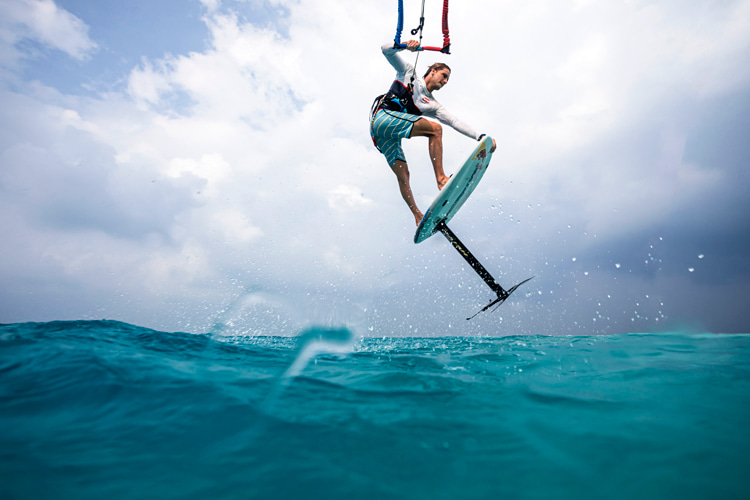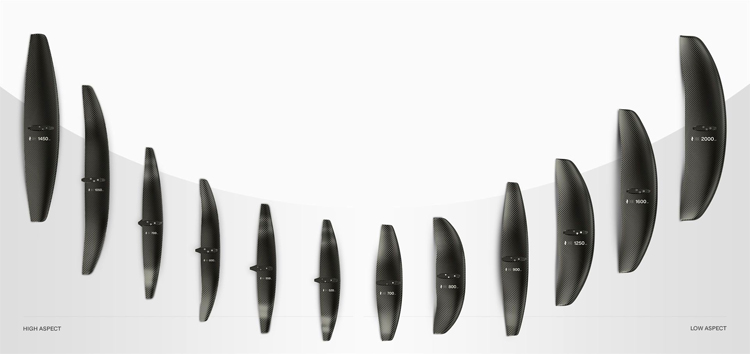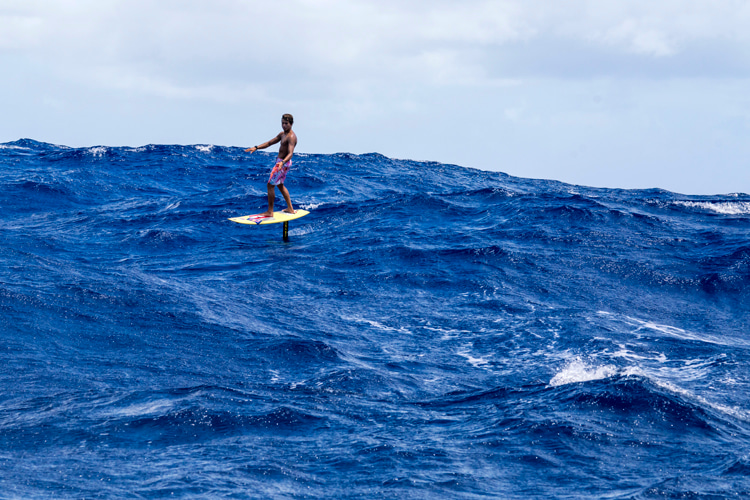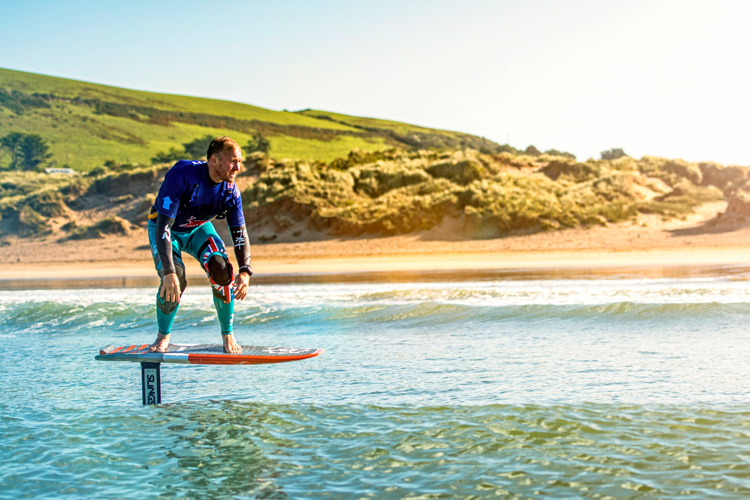The hydrofoil has origins deeply rooted in the quest to defy water resistance. Here's a simple guide to how foil surfboards work.
Conceived in the late 19th century, the hydrofoil's initial designs, patented by Enrico Forlanini, intended to increase the speed of watercraft by reducing drag.
As a result, his first hydrofoil boat was unique for its time.
It incorporated submerged "wings," or foils, attached to the boat's hull, enabling it to "fly" over water.
Over time, this concept found its way into various water sports, including sailing, where hydrofoil technology improved the speed and maneuverability of sailing vessels.
By the early 21st century, the foil had been integrated into surfboards, revolutionizing the surfing world and opening a new wind into the art of riding swells, even in the open ocean - foil surfing.

The Parts of a Hydrofoil Surfboard
With their ability to seemingly levitate over the water, many board sports have embraced hydrofoils, from windsurfing and kiteboarding to surfing.
However, the science behind this hydrodynamic wonder is intricate and often misrepresented.
To comprehend the mechanics of hydrofoil surfboards, one must first grasp the basic operation of conventional watercraft.
Please follow us, dear reader.
Boats and other traditional watercraft float due to buoyancy, propelled forward by thrust, and experience resistance as they displace water.
When these forces balance out - the buoyancy matches the craft's weight, and the thrust equals the resistance - the watercraft achieves equilibrium.
Hydrofoils disrupt this equilibrium to a surfer's advantage by reducing resistance and increasing speed.
They do this through a tripartite design:
- Payload: The top part of the hydrofoil setup where the surfer stands - it could be a surfboard or, in other cases, the hull of a boat;
- Fuselage: The structure that mechanically links the payload to the underwater wing;
- Underwater Wing: Similar to an airplane wing but optimized for water, this part produces lift, raising the payload above the water surface and significantly reducing hydrodynamic resistance;
The Science of "Flying" Over Water
The critical factor behind the hydrofoil's efficiency lies in its hydrodynamic design that influences water flow and pressure.
When a hydrofoil is immersed in water, it alters the path of water molecules.
On the lower side, water molecules get physically deflected downward due to the shape of the foil - akin to cars being redirected on a highway.
On the top side of the foil, however, the molecules follow along the surface of the foil, filling the new space provided.
This movement pattern results in a difference in flow velocity between the two sides of the foil.
This phenomenon can be explained using Bernoulli's Principle, named after Daniel Bernoulli, the Swiss mathematician and physicist.
According to this principle, an increase in the speed of a fluid (in this case, water) coincides with a decrease in static pressure.
As such, on the lower side of the foil, where water molecules get deflected and a "traffic jam" occurs, low speeds maintain high pressure.
On the upper side, water molecules accelerate into the new space, which reduces pressure.
This difference in pressure results in an upward force that lifts the hydrofoil and the payload out of the water.
Thus, the hydrofoil surfboard can "fly" above the water surface.
In summary, like conventional watercraft, hydrofoils are subject to three fundamental forces:
- Buoyancy (keeping the craft afloat);
- Thrust (propelling the craft forward);
- Resistance (opposing the forward movement);
Where foils differ is how they combat these forces.
By employing the underwater wing, they generate lift to raise the payload above the water, reducing hydrodynamic resistance significantly.
This is achieved by deflecting water downward, leading to an equal and opposite upward force.
Moreover, when the hydrofoil lifts the payload above the water, the production of divergent or transverse waves is largely eliminated, and friction between the craft and water is significantly reduced due to the minimized wetted surface area.
This combination increases speed, delivering that exciting "flying" experience.

Types of Hydrofoil Wings
Hydrofoil wings vary significantly, affecting the performance and feel of the surfboard.
Understanding the different types of equipment is crucial to optimizing performance based on specific conditions or preferences.
- High-Aspect Wings: These wings are long and narrow, designed for high speed and efficiency. They provide less lift than other types but offer greater maneuverability;
- Low-Aspect Wings: These are wider and shorter, providing more lift at lower speeds. Ideal for beginners, they offer stability but are less maneuverable than high-aspect wings;
- Mid-Aspect Wings: As a compromise between high and low-aspect wings, they provide a balance of speed, lift, and maneuverability;
- Batwing: With a unique design that resembles a bat's wing, these are versatile, efficient, and perform well in a variety of conditions;

Safety Considerations and Recommendations
While foil surfboards offer spectacular, high-speed surfing experiences, they pose certain dangers, particularly in crowded beach areas and surf spots.
The risk arises from the sharp foil wings that can cause injuries if not handled correctly.
Here are some of the most important safety recommendations for using hydrofoil surfboards:
- Use at a safe distance: Keep a considerable distance from other surfers or swimmers to avoid accidents;
- Wear protective gear: Use helmets and impact vests to protect yourself in case of falls or collisions;
- Choose appropriate locations: Avoid crowded spots and areas with shallow water or underwater obstacles;
- Practice control: Master controlling the foil's height and direction before venturing into crowded waters;
- Get proper training: Hydrofoiling is significantly different from traditional surfing. Thus, it's recommended to get professional instruction before starting;
Some countries have already banned the use of foil surfboards on beaches. Please check your local regulations and always play it conservatively.
A hydrofoil is a shark knife and is potentially life-threatening.
